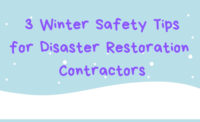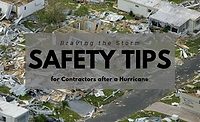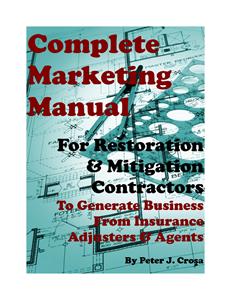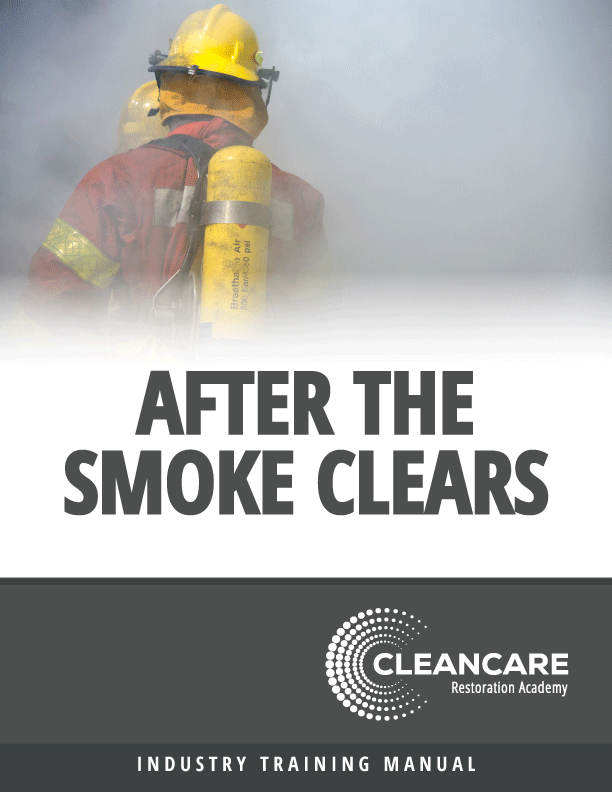3 Tips for Choosing the Right Protective Clothing




Safety leaders in the restoration and remediation industry are always looking for the most effective PPE to meet the needs of employees and enhance work flow practices. PPE must meet industry and federal regulations while at the same time allowing team members to perform their required duties efficiently and comfortably. It's an essential balance to strive for, since comfort drives compliance and makes for more productive (and more protected) team members.
1. What Hazards Can My Employees Be Reasonably Expected to Come Across in Their Typical Job Duties?
Here's another way to ask this question: What am I trying to protect my team members from?
The pathogens, particulate matter, airborne chemicals, and liquids (sometimes under pressure) your employees may come in contact with need to be kept away from their eyes, skin, airway, and clothing. This is to avoid accidental ingestion or contact, which in severe cases can be life-threatening.
It’s important to understand the types of materials your employees could reasonably come across during common restoration and remediation projects, such as fire clean-up, mold and asbestos removal, and even bio-hazard cleanup.
2. Which Fabric is needed to Adequately Protect My Team Members from These Expected Hazards?
Once the hazardous agent has been identified, the next step is to look at a fabric that will protect the worker and do it in a comfortable way. There are several fabrics for the chooser to review including, based on the degree of complexity and potential hazard of the job:
- Polypropylene: this lightweight material is acceptable for general cleanup projects. It provides adequate protection against dust, dirt, grime, and other common environmental hazards.
- SMS: this three-layer material can protect against various particulates (such as mold and fungus) and light liquid sprays or splashes. It's generally appropriate when higher levels of protection are required than what can be adequately provided by polypropylene garments.
- Microporous: This affordable and disposable fabric provides protection against particulates, light liquids, and oftentimes - blood.
Workers in the restoration and remediation field are often around and handling hazardous chemicals and waste. In these instances, proprietary fabrics that protect against dangerous agents (such as toxic mold, asbestos, sewage, and highly infectious diseases) are essential.
Any restoration and remediation employee working around infectious agents must also be wearing garments which pass ASTM F1670 and F1671 for blood and blood-borne pathogens. This will ensure they will adequately hold out against bodily fluids and the potential pathogens they carry.
For workers handling hazardous liquid chemicals, the specific chemical and its concentration level must be determined to ensure the PPE provided can deter it effectively.
3. What Type of Suit Construction is Best Suited to meet the Goals of Worker Safety and Comfort?
One of the final considerations of the garment or garments you choose for your company's PPE needs should be the overall suit construction. Ideally, the PPE worn by your employees will be well-engineered, easy to don and doff, breathable, and comfortable.
Protective clothing that is comfortable is more likely to be worn appropriately. It’s not uncommon to see wearers’ "modify" their apparel through unsafe means (such as cutting holes in the fabric) in an attempt to improve ventilation and reduce overheating.
Here are a few specific questions to consider that can help you determine if the PPE design will be well-suited for your restoration and remediation employees. A well-constructed suit will fail less often, which oftentimes can reduce your total cost in use.
- Is the shoulder area one-piece? In the clothing design world, this is referred to as a raglan sleeve. No seams in the shoulder decreases the likelihood of the garment tearing or ripping.
- Is the groin area reinforced? For example, a triangular patch in the groin area (known as a gusseted crotch) permits for the mobility required to perform typical movements employees will perform during a clean-up job (including climbing and squatting) while reducing the risk of tearing in the groin area.
- Is there elastic in the back? Elastic in the back offers the chooser to buy the correct size and not have to ‘size-up’ because the worker may need to stretch or reach.
- Is the zipper exposed? Exposed zippers provide potential access point for the hazardous agent to come in contact with an employee's skin or clothing. Instead, look for a suit that has a fabric flap covering the zipper.
The Right Protection Helps the Job Get Done Right— and Keeps Your Team Members Safe
Need some help navigating the breadth of protective clothing choices at your disposal? Check out our unique Suit Yourself tool to help you make sense of the PPE that will be a best fit for your needs.
International Enviroguard is a leading manufacturer of disposable protective apparel. International Enviroguard offers an extensive selection of disposable protective clothing, chemical suits, cleanroom apparel, tacky mats, carpet film, and a wide assortment of other personal protective equipment for many industries. To learn more about International Enviroguard, visit int-enviroguard.com.
Looking for a reprint of this article?
From high-res PDFs to custom plaques, order your copy today!









